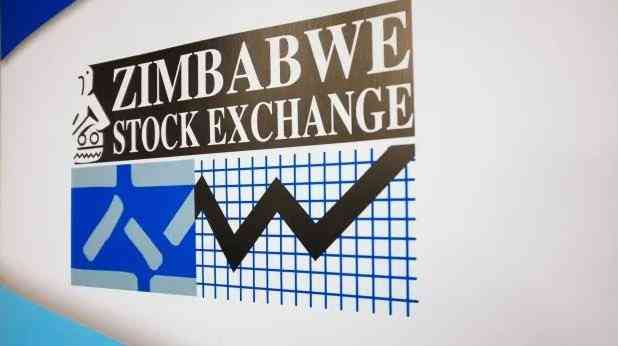
THE Zimbabwean government has extended the use of the multi-currency system to 2030 from the previously communicated 2025.
Through Statutory Instrument (SI) 218 of 2023, the United States dollar will remain legal tender till 2030. Part 2(a) of the SI reads that the provisions of the schedule, in so far as they expressly or impliedly permit the settlement of any transaction or the payment for goods and services in foreign currency, shall, notwithstanding SI 142 of 2019, be valid until December 31, 2030.
Zimbabwe officially dollarised on April 9, 2009, and adopted a basket of multiple currencies led by the United States dollar and South African rand.
Citizens and businesses had rejected the Zimbabwean dollar and started using foreign currencies after record hyperinflation figures eclipsed 250 million (officially) in July 2008. However, the local currency was re-introduced in February 2019 under the Real-Time Gross Settlement (RTGS) banner with the exchange rate pegged at US$1 to ZW$2,5.
Annual inflation increased from 59% in February 2019 to 838% in July 2020. The country re-entered hyperinflation again in April and May 2023 even though the last published annual inflation figure for the local currency was 229,8% in January 2023.
Inflation in the local currency remains elevated even though goods and services are now predominantly indexed in foreign currency across the country.
Repeal of SI 142 of 2019
The government has made a summersault four years after banning the multiple currency and pronouncing the Zimbabwean dollar as the sole legal tender in the country through SI 142 of June 2019. The new law means SI 142 and its provisions have been repealed.
- To or not to deduct Aids Levy from VAT in Zim
- Charging school fees in forex unreasonable
- Stop meddling in PSMAS affairs
- Village Rhapsody: Zimbabwe’s currency merry-go – round continues
Keep Reading
Rapid dollarisation
Previous estimates by the Zimbabwe Statistical Agency (Zimstat) show that over 80% of local transactions are now being done in foreign currency while the central bank points that foreign currency deposits constituted 82% of total money supply as of June 2023, while local currency deposits accounted for 18%.
Foreign currency deposits have grown by over 433% to at least US$1,6 billion as of September 2023. The levels of dollarisation are 100% in rural areas and peri-urban markets where informal trade is the norm. Therefore, extending the use of the multiple currency was only inevitable.
Lending squeeze
Aggregate banking sector loans in the Zimbabwean financial sector increased by eight times from ZW$1,29 trillion as at December 31 2022 to ZW$10,19 trillion as of June 30 2023 with foreign currency loans, constituting 94% of the loan book.
Foreign currency loans to deposits ratio was 60% during the same period. This means that the US dollar is now the lending currency of choice for local banks largely because of the misalignment between interest rates and inflation in the local currency.
Similarly, banks have lost significant value in mortgages and loans denominated in Zimbabwean dollar in the past due to high levels of inflation. Thus, failure to extend the multi-currency regime would have ended any prospects for long term lending.
Dual monetary economy
The government is very much happy to maintain a dual monetary economy (Zimdollar alongside the US dollar) in order to support various government subsidies (especially in agriculture), get cheap foreign currency from exporters to repay foreign debt, receive tax revenues in foreign currency, while paying creditors in local currency when it sees fit. With a dual currency economy, the central bank retains some modicum of relevance in the economy and as an agent of the government in sourcing foreign currency.
Mono-currency policy failure
Despite repeated political statements on pursuing mono-currency and banning the US dollar, the Zimbabwean dollar has failed to maintain value or gain any confidence in the market.
After banning the US dollar in February 2019, it only took one year for the government to reverse the ban with the promulgation of SI 85 of 2020, which allowed consumers to legally pay for goods and services using foreign currency.
Other regulations (SI 185 of 2020) later followed to compel local businesses and persons to price their goods and services using the central bank determined foreign exchange rates.
What followed afterwards was a rapid decline of the productivity because of a combination of factors coalesced around high inflation, exchange rate volatility and foreign currency shortages.
Economic output declined from 4% growth realised in 2018 to -6,5% recorded in 2019 and -6,2%, according to official figures from treasury.
Tax revenues plummeted from US$5,237 billion collected in 2018 to US$2,691 billion collected in 2019. Inflation consumed household incomes, pension funds and corporate incomes.
The World Bank estimated that extreme poverty cases in Zimbabwe increased from 4,7 million in 2018 to 6,6 million people in 2019 and 7,9 million in 2020. Covid-19 and droughts exacerbated the poverty levels.
Why multi-currency makes sense
As discussed above, the use of the US dollar will improve banking sector lending and investment in the economy. Though risks of policy changes remain high, the business sector, especially mining, agriculture and manufacturing, can forecast with a six-year horizon in terms of planning.
Additionally, certainty about using a stable currency allows the economy to build savings after years of inflation induced losses, manage interest rates, resume financial intermediation, reduce transaction costs in trade and retool production.
Full dollarisation risks
Dollarisation has its fair share of problems for the country if there is lack of confidence in economic policies and loopholes on economic governance caused by a burdensome taxation model, porous borders, high levels of corruption, restrictions on repatriation of dividends and movement of capital.
Thus, dollarisation opens floodgates of foreign currency externalisation at all levels. Between 2015 and 2017, over US$3 billion was externalised from the Zimbabwean economy by corporates, politicians and business tycoons to Mauritius, South Africa, and the Far East. However, some argue that foreign currency externalisation worsened after the 2013 harmonised elections due to investor fears of possible economic mismanagement.
A dollarised banking sector can also be characterised by higher insolvency risk and higher deposit volatility. Without sufficient protectionist policies, local manufacturers often find it difficult to compete with competitively priced imports from South Africa and Asia due to the high cost of production locally.
Dollarisation exposes competitiveness weaknesses that already exist, especially on capacity constraints.
Experiences from elsewhere
Zimbabwe’s dollarisation path follows a host of other case studies in the world. Over the last 40 years, particularly between 1980 and 1998, there was a surge in dollarisation that swept many developing economies in South America, Asia and Europe.
Many countries resorted to using the US dollar to either revive or stabilise their economies. The significant inflow of dollars from exports, international remittances and growth in tourism made it easy for countries in South America to dollarise their economies between the 1980s and 1990s.
Forced de-dollarisation has had limited success. Countries that tried to force de-dollarisation experienced financial disintermediation and capital flight. Most (Like Zimbabwe) reversed their mono-currency policies a few years later to counter the adverse economic consequences.
Zimbabwe was neither the first country to fully dollarise, nor was it the first attempt to de-dollarise.
Countries, such as Cambodia, Bolivia, Vietnam, Peru, El Salvador and Chile (among several others) have dollarised and tried to de-dollarise before. De-dollarisation has never been successful as a policy, but as a benefit to pragmatic economic reforms.
Only a handful (notably Israel, Poland, Vietnam and Georgia) have managed to fully de-dollarise due to a combination of factors such as free market policies, domestic money supply management and macro-economic stability and strong institutions.
Success was underwritten by political will to reform and grant the central bank monetary policy independency. De-dollarisation will never be a success if the government constantly interferes with monetary policy, dictates foreign exchange prices to the market and maintains a local currency as a tool to print to cover fiscal deficits.
The market has virtually lost confidence in the local currency, or any monetary instruments denominated in local currency due to the central bank policies and repeated failure over the years.
With continuous devaluation of the domestic currency, the writing was always on the wall in terms of extending the lifespan of the multi-currency regime.
Despite political rhetoric, the de-dollarisation path went off rails soon after its launch due to absence of various economic fundamentals that support the stability of a fiat currency, such as foreign reserves, low levels of inflation, market confidence, sustainable fiscal budget, and central bank monetary policy independence from political interference.
The government tried to use excessive regulations to force de-dollarisation without any political will to address key factors that cause economic instability.
Similarly, key constrains, such as high levels of sovereign debt, institutional flaws on property rights and lack of respect for rule of law persist to this day. Thus, extending the lifespan of multi-currency regime was the only logical choice after repeated local currency catastrophes.
The US dollar gives the economy a chance to maintain marginal growth while market forces play to ensure there is sufficient demand and supply despite economic policy missteps by the government.
Bhoroma is an economic analyst and free market lobbyist. He holds an MBA. — [email protected] or X @VictorBhoroma1.











